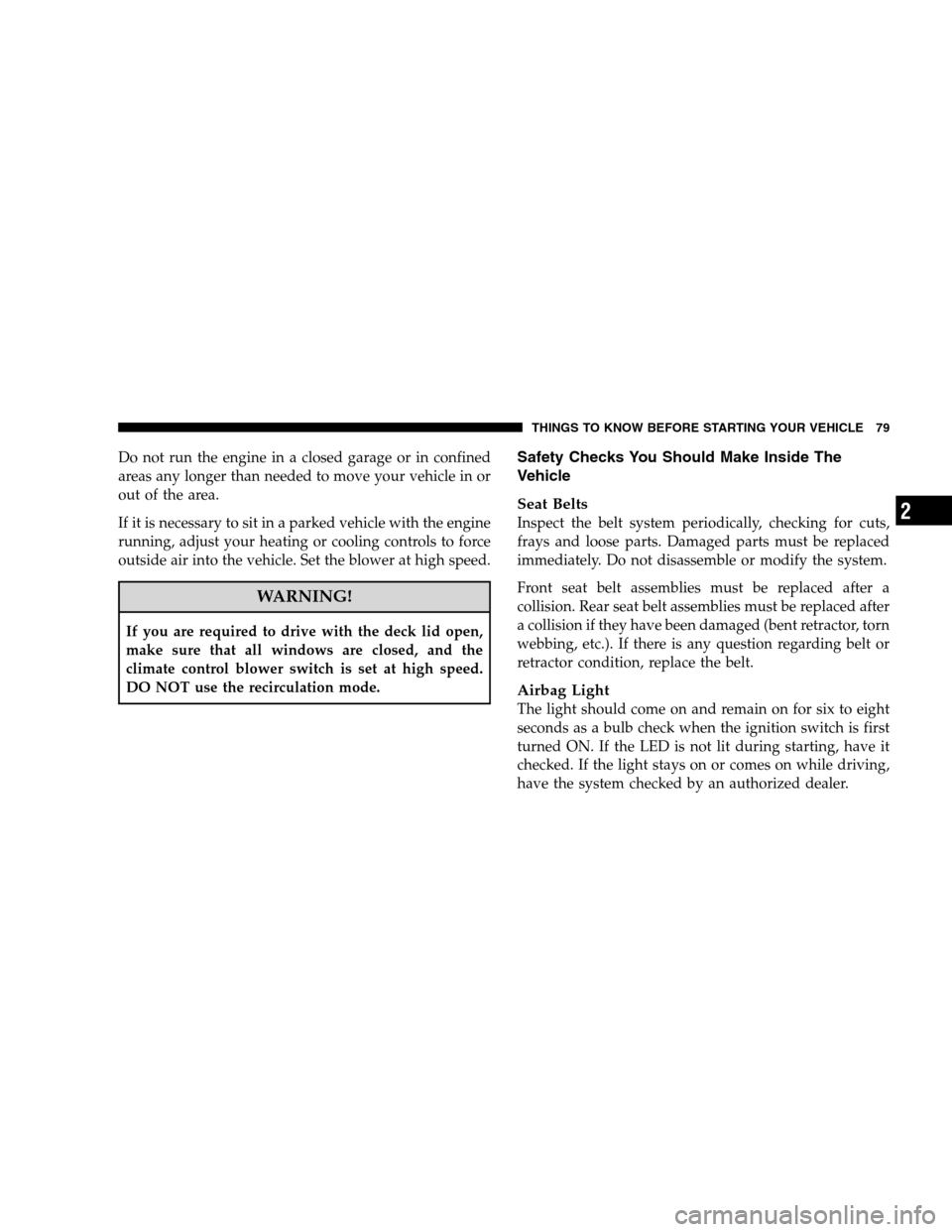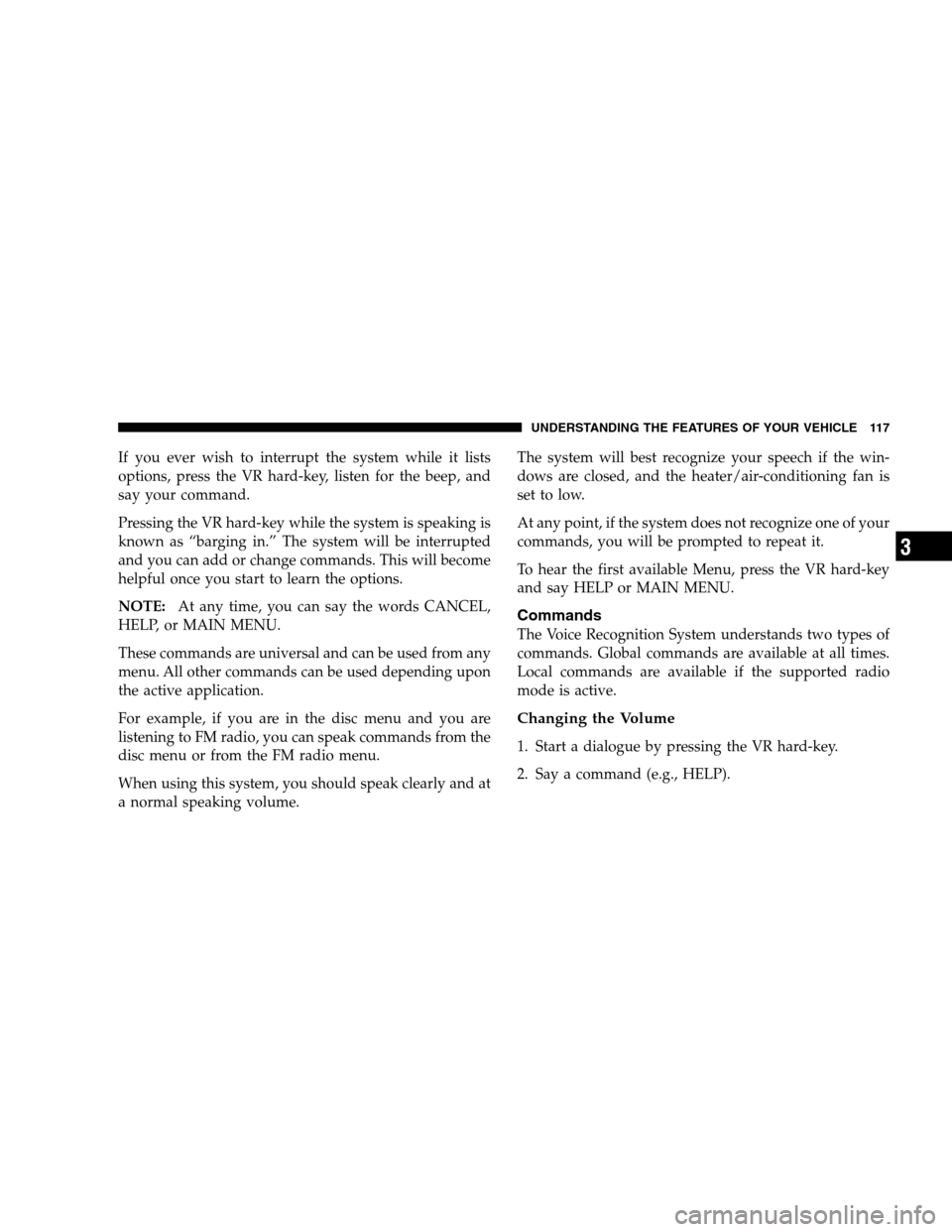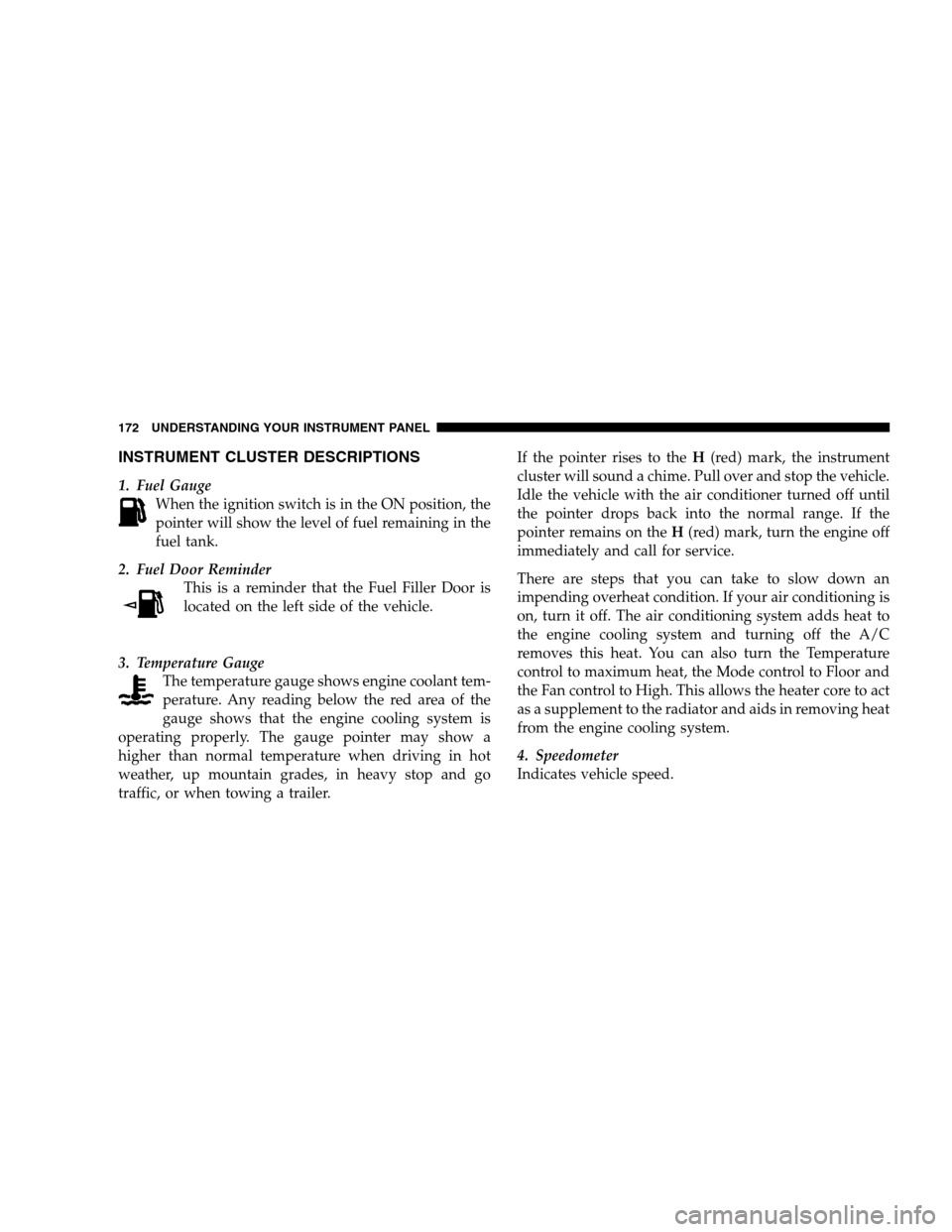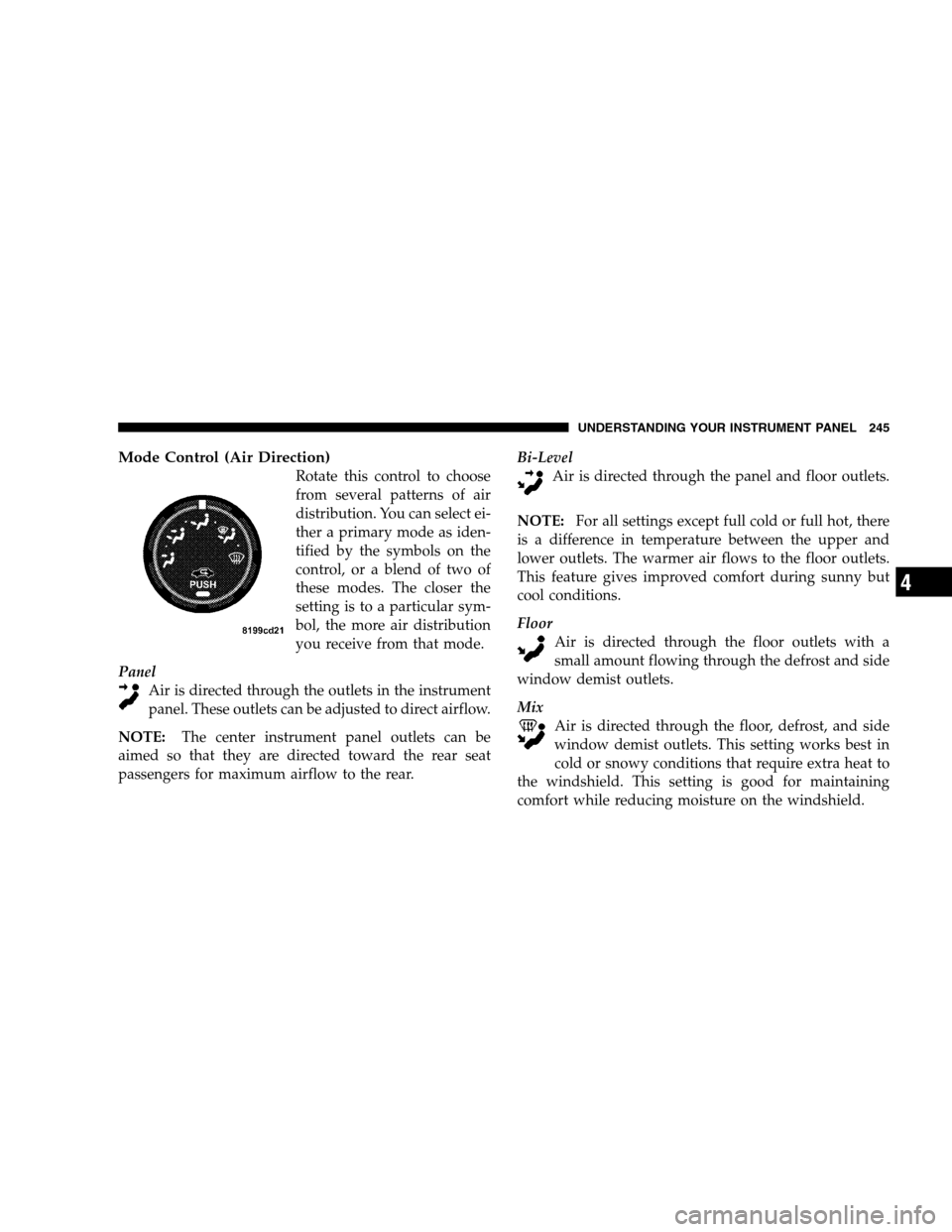Page 29 of 494
If your Remote Lock Control fails to operate from a
normal distance, check for these two conditions.
1. Weak batteries in the transmitter. The expected life of
batteries is five years.
2. Closeness to a radio transmitter such as a radio station
tower, airport transmitter, military base, and some mobile
or CB radios.
REMOTE START SYSTEM — IF EQUIPPED
Remote start conveniently starts the engine from outside
the vehicle by using the Remote Keyless Entry (RKE) key
fob while maintaining security. The system has a targeted
range of up to 300 ft (91 m). The vehicle must be locked,
the deck lid and hood closed and the transmission gear
selector lever in PARK in order to start the engine using
the Remote Start button on the key fob.NOTE:Remote start requires automatic transaxle
equipped vehicles.
Remote Start
THINGS TO KNOW BEFORE STARTING YOUR VEHICLE 27
2
Page 81 of 494

Do not run the engine in a closed garage or in confined
areas any longer than needed to move your vehicle in or
out of the area.
If it is necessary to sit in a parked vehicle with the engine
running, adjust your heating or cooling controls to force
outside air into the vehicle. Set the blower at high speed.
WARNING!
If you are required to drive with the deck lid open,
make sure that all windows are closed, and the
climate control blower switch is set at high speed.
DO NOT use the recirculation mode.
Safety Checks You Should Make Inside The
Vehicle
Seat Belts
Inspect the belt system periodically, checking for cuts,
frays and loose parts. Damaged parts must be replaced
immediately. Do not disassemble or modify the system.
Front seat belt assemblies must be replaced after a
collision. Rear seat belt assemblies must be replaced after
a collision if they have been damaged (bent retractor, torn
webbing, etc.). If there is any question regarding belt or
retractor condition, replace the belt.
Airbag Light
The light should come on and remain on for six to eight
seconds as a bulb check when the ignition switch is first
turned ON. If the LED is not lit during starting, have it
checked. If the light stays on or comes on while driving,
have the system checked by an authorized dealer.
THINGS TO KNOW BEFORE STARTING YOUR VEHICLE 79
2
Page 119 of 494

If you ever wish to interrupt the system while it lists
options, press the VR hard-key, listen for the beep, and
say your command.
Pressing the VR hard-key while the system is speaking is
known as “barging in.” The system will be interrupted
and you can add or change commands. This will become
helpful once you start to learn the options.
NOTE:At any time, you can say the words CANCEL,
HELP, or MAIN MENU.
These commands are universal and can be used from any
menu. All other commands can be used depending upon
the active application.
For example, if you are in the disc menu and you are
listening to FM radio, you can speak commands from the
disc menu or from the FM radio menu.
When using this system, you should speak clearly and at
a normal speaking volume.The system will best recognize your speech if the win-
dows are closed, and the heater/air-conditioning fan is
set to low.
At any point, if the system does not recognize one of your
commands, you will be prompted to repeat it.
To hear the first available Menu, press the VR hard-key
and say HELP or MAIN MENU.
Commands
The Voice Recognition System understands two types of
commands. Global commands are available at all times.
Local commands are available if the supported radio
mode is active.
Changing the Volume
1. Start a dialogue by pressing the VR hard-key.
2. Say a command (e.g., HELP).
UNDERSTANDING THE FEATURES OF YOUR VEHICLE 117
3
Page 170 of 494
�Video Entertainment System (VES)�—
If Equipped...........................240
�Radio Operation And Cellular Phones........242
�CD/DVD Disc Maintenance...............242
�Climate Controls.......................243
▫Manual Air Conditioning And Heating
System.............................243▫Automatic Temperature Control (ATC) —
If Equipped.........................248
▫Operating Tips.......................254
�Rear Window Features...................258
▫Electric Rear Window Defroster —
If Equipped.........................258
168 UNDERSTANDING YOUR INSTRUMENT PANEL
Page 174 of 494

INSTRUMENT CLUSTER DESCRIPTIONS
1. Fuel Gauge
When the ignition switch is in the ON position, the
pointer will show the level of fuel remaining in the
fuel tank.
2. Fuel Door Reminder
This is a reminder that the Fuel Filler Door is
located on the left side of the vehicle.
3. Temperature Gauge
The temperature gauge shows engine coolant tem-
perature. Any reading below the red area of the
gauge shows that the engine cooling system is
operating properly. The gauge pointer may show a
higher than normal temperature when driving in hot
weather, up mountain grades, in heavy stop and go
traffic, or when towing a trailer.If the pointer rises to theH(red) mark, the instrument
cluster will sound a chime. Pull over and stop the vehicle.
Idle the vehicle with the air conditioner turned off until
the pointer drops back into the normal range. If the
pointer remains on theH(red) mark, turn the engine off
immediately and call for service.
There are steps that you can take to slow down an
impending overheat condition. If your air conditioning is
on, turn it off. The air conditioning system adds heat to
the engine cooling system and turning off the A/C
removes this heat. You can also turn the Temperature
control to maximum heat, the Mode control to Floor and
the Fan control to High. This allows the heater core to act
as a supplement to the radiator and aids in removing heat
from the engine cooling system.
4. Speedometer
Indicates vehicle speed.
172 UNDERSTANDING YOUR INSTRUMENT PANEL
Page 245 of 494
3. Do not apply paper, paper CD labels, or tape to the
disc; avoid scratching the disc.
4. Do not use solvents such as benzine, thinner, cleaners,
or antistatic sprays.
5. Store the disc in its case after playing.
6. Do not expose the disc to direct sunlight.
7. Do not store the disc where temperatures may become
too high.
8. Do not play discs that are small in size or have
irregular shapes.CLIMATE CONTROLS
The Air Conditioning and Heating System is designed to
make you comfortable in all types of weather.
Manual Air Conditioning and Heating System
The Manual Temperature Controls consist of a series of
outer rotary dials and inner push knobs.
UNDERSTANDING YOUR INSTRUMENT PANEL 243
4
Page 246 of 494
Blower Control
Rotate this control to regulate
the amount of air forced
through the ventilation sys-
tem in any mode. The blower
speed increases as you move
the control to the right from
the “O” (Off) position. There
are four blower speeds.
Temperature Control
Rotate this control to regulate
the temperature of the air in-
side the passenger compart-
ment. Rotating the dial left
into the blue area of the scale
indicates cooler temperatures
while the rotating right into
the red area indicates warmer
temperatures.
NOTE:If your air conditioning performance seems
lower than expected, check the front of the A/C con-
denser: located in front of the radiator, for an accumula-
tion of dirt or insects. Clean with a gentle water spray
from behind the radiator and through the condenser.
Fabric front fascia protectors may reduce airflow to the
condenser, reducing air conditioning performance.
244 UNDERSTANDING YOUR INSTRUMENT PANEL
Page 247 of 494

Mode Control (Air Direction)
Rotate this control to choose
from several patterns of air
distribution. You can select ei-
ther a primary mode as iden-
tified by the symbols on the
control, or a blend of two of
these modes. The closer the
setting is to a particular sym-
bol, the more air distribution
you receive from that mode.
Panel
Air is directed through the outlets in the instrument
panel. These outlets can be adjusted to direct airflow.
NOTE:The center instrument panel outlets can be
aimed so that they are directed toward the rear seat
passengers for maximum airflow to the rear.Bi-Level
Air is directed through the panel and floor outlets.
NOTE:For all settings except full cold or full hot, there
is a difference in temperature between the upper and
lower outlets. The warmer air flows to the floor outlets.
This feature gives improved comfort during sunny but
cool conditions.
Floor
Air is directed through the floor outlets with a
small amount flowing through the defrost and side
window demist outlets.
Mix
Air is directed through the floor, defrost, and side
window demist outlets. This setting works best in
cold or snowy conditions that require extra heat to
the windshield. This setting is good for maintaining
comfort while reducing moisture on the windshield.
UNDERSTANDING YOUR INSTRUMENT PANEL 245
4